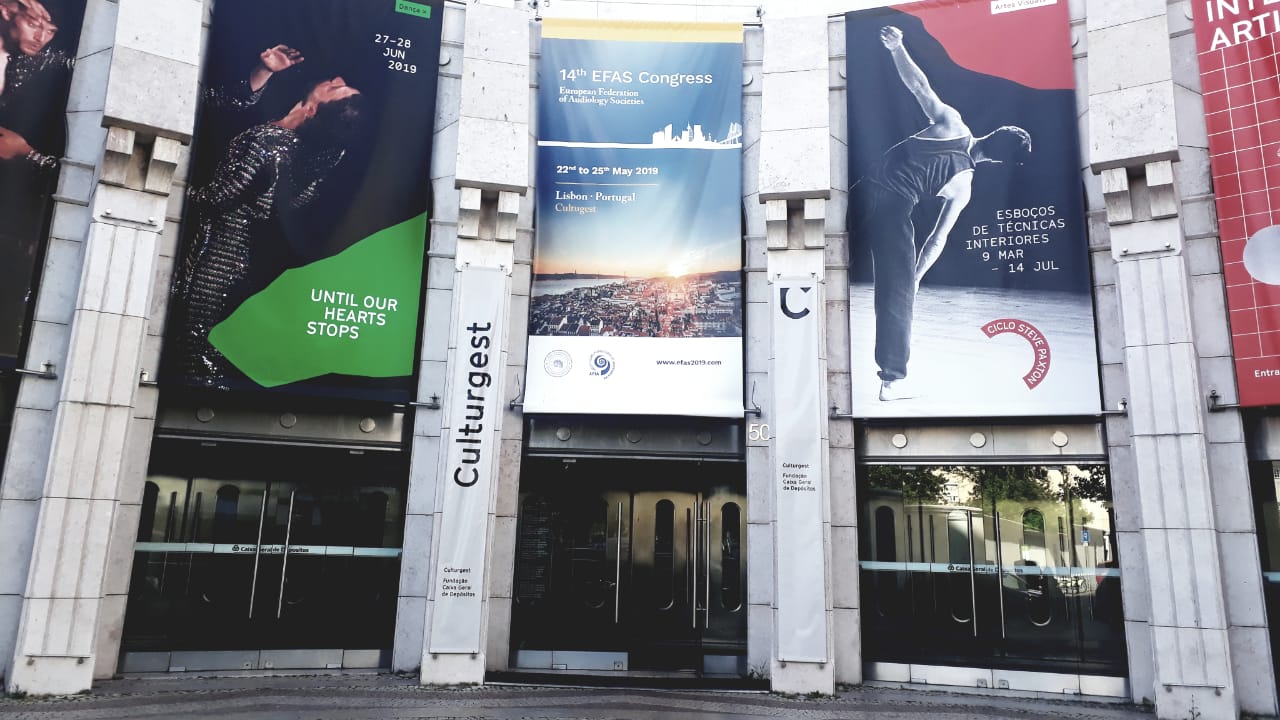
19 Juni Audiologie Konferenz in Portugal
Vom 22. bis 25. Mai fand in Lissabon der 14. Kongress der “European Federation of Audiology Society” (EFAS) statt. Ich (Sandra) durfte daran teilnehmen und 2 Vorträge über unsere Arbeit in Nepal halten.
Die Vorbereitungen und insbesondere das Schreiben der Abstracts und die beiden Präsentationen haben mich ziemlich gefordert. Der Kongress aber war eine einmalige Gelegenheit, Kontakte zu knüpfen und Neues zu lernen.
Wenn ihr weiter nach unten scrollt, dann könnt ihr die beiden Abstracts sehen. Diese sind auch im EFAS Journal erschienen.
Viel Spaß beim Lesen 😉



Abstract 1
Keywords, Nepal, Ear and Hearing Health, Public Health, Start-up
Background, Ear disease (ED) and hearing loss (HL) are a major public health issue worldwide. 80% of those with a disabling HL live in low- and middle-income countries. Nepal is such a country but there is no existing national programme, specialized facilities are scarce, and professionals are employed in urban areas.
Material and methods, This is a retrospective analysis of starting ear and hearing care services in 2018 in a remote and resource-constrained community of East Nepal. The services were implemented in the Upper Arun Valley in a joint collaboration with the Jhyambe Mengang Clinic and the Nepal Lhomi Society. A health needs assessment was conducted, medical records analyzed, a community profile developed and health education programs in 7 schools were conducted.
Results, The people living in the Upper Arun Valley, a Tibetan ethnic people group, believe that diseases are caused by evil gods. If sick, a person consults with a shaman. Only few patients with ED and HL visit the clinic. Reasons are a lack of awareness, health beliefs/practices based on their religious belief and insufficient prioritization against other needs. Several small health posts are located in the are and the government is increasingly implementing new facilities, but the next hospital is 2-4 days away and doesn’t have an ENT Department. These are barriers for patients to seek further treatment. Additionally, health workers are lacking in-depth knowledge and proper equipment. Thus, the 4 main areas of need are: raising awareness; training; providing equipment; implementing specialized ear and hearing services. The first stage of the project included health education programs regarding ED and HL in 7 schools including ear syringing if needed. Out of 358 students, 33% were identified with ear pathology. The majority had impacted wax which was removed by a local health worker.
Conclusion, Starting new services needs thorough investigation about what is possible and achievable. It requires engaging with local communities, health facilities and health care workers and using already existing infrastructure. Health beliefs of the local community need to be taken into account as they are shaping health-related behaviour and will have great influence on up-take and sustainability of any project. Only if appropriate beliefs are held, cues to action (social influence/health education) can trigger health behaviour.
Abstract 2
Keywords, Nepal–Ear Surgery Outreach Camps–retrospective study–Ear Aid Nepal
Background, In Nepal, ED and HL are treated in primary, secondary or tertiary government facilities, private clinics or through various NGOs and INGOs. Nevertheless, the provision of services is unsatisfactory with most of the facilities concentrated in urban areas. Out of 75 districts, only 11 offer specialized services. Thus, reaching out to these underserved communities should be an essential part of any hospital. Among others, the International Nepal Fellowship and Ear Aid Nepal have been conducting Ear Surgery Outreach Camps (ESOC) since 1992.
Material and methods, This study is a retrospective analysis of 51 ESOCs conducted between 1992 and 2015 in western Nepal. All data for this study were collected at time of presentation. All records were entered into an electronic database by team members after each ESOC. The records were then anonymized and exported to a personal computer for analysis.
Results, The ESOC teams saw a total of 43,147 patients and performed 4,646 surgeries. Patient inflow increased over time with most of them being <20 years of age. 70% of the attendees presented with definite ear pathology. After CSOM, the most diagnosed disease was SNHL (12%), 83% were bilateral, 17% unilateral. Profound hearing loss was affecting 12%, moderate hearing loss was predominant (36%) followed by severe (31%) and mild (21%). Profound hearing loss is high amongst children below 10 years compared to high numbers of moderate and severe hearing loss amongst people between 50 and 60 years. 42% of patients with SNHL were fitted with a hearing aid, 98% in one ear.
Conclusion, ED and HL are a huge burden of disease in Nepal and at the moment not managed without medical camps. A changing pattern of disease and visitors was found with rising numbers of women seeking treatment, SNHL increasingly being diagnosed and decreasing numbers of CSOM. But the numbers and results discussed might even only represent a small proportion of the actual problem as many areas are still not covered by medical camps.


No Comments